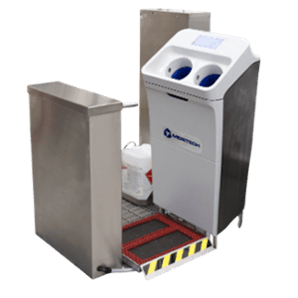What Are the Impacts to a Food Safety and Quality Culture?
Welcome to the second post in Meritech's continuing series on food safety culture! The previous post discussed the importance of building a food safety culture into your organization. This time, you'll learn more about some factors that can impact a food safety and quality culture.
You can read all the posts in this food safety culture series here:
1. What is a food safety culture?3. How to create a food safety culture
4. Maintaining and reinforcing a food safety culture
Diversity in Languages and Cultures
Diversity is a wonderful thing in the workplace, however, it does come with its own set of challenges. When production team members are from diverse backgrounds and cultures, regular hygiene training and compliance with SOPs or GMPs can be more difficult. A multilingual staff can complicate the dissemination and understanding of vital food safety information. Linguistic nuances and specifics of a Standard Operating Procedure (SOP) that are not fully understood can put an entire operation at risk of cross-contamination due to poor employee hygiene or compliance.
Overall, while diversity can potentially impact food safety, more importantly, it is a tremendous asset that can advance an organization’s food safety culture with unique perspectives and new ideas. To take advantage of the many benefits stemming from diversity, a facility must ensure that their culture that goes beyond language and promotes proper hygiene actions throughout their organization using tools like an employee hygiene contract, team member mentors and visual training and guiding tools. It is also key that members from all cultural backgrounds and across all levels of the organization are included in building the hygiene culture through things like a food safety committee.
Team Member Attitudes and Emotions
The way people feel about personal hygiene and its impact on the organization as a whole has significant importance to the sustainability of your company’s food safety culture. If people don't believe that their actions can impact someone else, they'll eventually seek the path of least resistance and avoid SOPs that they find inconvenient. Furthermore, if they don't feel that they will be or can be held accountable, the chances of this behavior increases.
To maintain a food safety culture, leadership must set a good example and always follow proper hygiene procedures. The reasons behind these procedures need to be explained in a way that ensures they're not just checklist items, but actionable ways for an individual to positively impact food safety culture. Commitment to food safety must ultimately be a shared attitude within the organization where the values and beliefs of the production team are synchronized with those of the organization as a whole.
Design of Facility Hygiene Zones

To meet food safety regulations and prevent cross-contamination between clean, dirty and allergen areas, organizations must include hygiene zones into the design of their facilities. However, to truly support a food safety culture, these zones must be clearly defined and laid out so that production team members are left with no question as to where they are in the hygiene process and what SOPs are required to enter the production zone. Limiting access to production areas through the use of physical barriers, controlled access turnstiles and access authorization is recommended as a best practice to prevent cross-contamination.
Overall, even the best hygiene cultures can be impacted by a poor hygiene zone layout. Having a correct hygiene zone layout that supports the effective practice of your hygiene SOPs and is enforced through controlled access measures is key to a lasting food safety culture at your facility.
The Variability of Human Behavior
Without a doubt, human behavior presents the largest potential source of contamination within a food plant. This is because food production team members naturally come into contact with surfaces, equipment, products, clothing and each other during the course of their daily tasks. Unfortunately, these natural encounters can often cause someone to effectively transition from a clean zone to a dirty zone without a hygiene intervention step.
To overcome human behavior you need to create a food safety culture that brings awareness to each individual’s hygiene behaviors at your facility. Creating this culture begins with aligning everyone on your team with your organization's main hygiene SOPs using a social contract. Overall, a hygiene social contract makes each member personally responsible for their hygiene behaviors and accountable in preventing cross-contamination and the spread of pathogens.
The hygiene social contract and how it is used will be explained further in the upcoming post "How to Create a Food Safety Hygiene Culture." In the interim, you can download the contract and learn more about food safety cultures by registering for the Employee Hygiene Toolbox!







